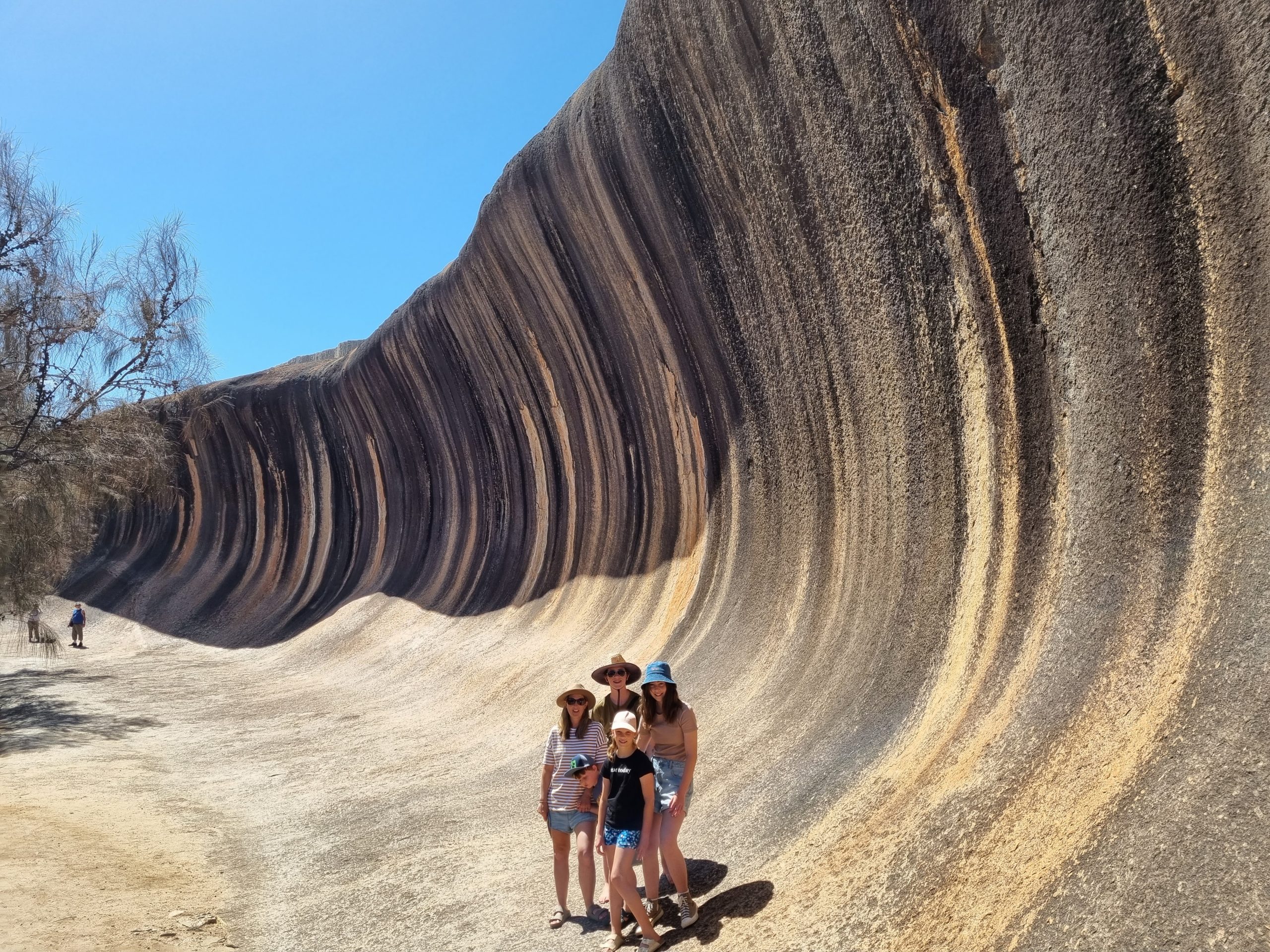As i sit here after exploring Wave Rock and pondering the rich history of this area I am reminded why we are doing this big lap. We have made the conscious decision to check out. To Check out of the rat race, and to check out this beautiful country we live in. We are a family of 6 intentional about spending time together. We are seeking to learn together and teach others about our journey and how to slow down and enjoy life together.
We have crossed the Nullarbor and been blown away by the spectacular beaches and landscape at Cape Le Grand and Esperance. We are now at Wave Rock, a stunning rock formation located in the Wheatbelt region of Western Australia.
Our journey from Cape Le Grand continued up through Ravensthorpe, a charming town known for its wildflower displays in spring. We were fortunate to be there during the off-season and had the chance to explore the town’s surroundings in peace.
Our main attraction in Ravensthorpe, however, was Wave Rock. As we approached the site, we were greeted by a towering granite rock, shaped like a breaking ocean wave. It was simply awe-inspiring! We spent a good amount of time taking photos and exploring the area on foot and on our bikes.
Wave Rock has a rich history. According to geologists, the wave shape was formed by erosion, followed by weathering and chemical alteration. The rock also has significant cultural and spiritual value to the local Noongar people. It is believed to be a creation site of the Rainbow Serpent, a powerful ancestral being in their mythology.
Apart from Wave Rock, there are other interesting attractions in the area, such as the Hippo’s Yawn, a rock formation resembling a hippopotamus yawning, and the nearby salt pool, which is said to have healing properties. We cycled to the salt pool and were surprised by its setting as its seemed half finished. We all hopped in and floated like we had life vests on. It was a surreal experience floating so easily and unintentionally.
We made the effort to visit Mulka’s Cave, which is a significant cultural site located near Wave Rock.
Mulka’s Cave is named after Mulka, a notorious Aboriginal outlaw who was said to have lived in the area during the 19th century. The cave is believed to have been used as a shelter and gathering place by the local Noongar people for thousands of years.
Inside the cave, there are several rock art paintings that depict various animals, human figures, and mythical beings. These paintings are considered to be some of the finest examples of Aboriginal rock art in Western Australia and are of great cultural and historical significance. The paintings are believed to have been created by several generations of Noongar artists over a period of at least 2,000 years.
In addition to the paintings, Mulka’s Cave also has a fascinating history associated with it. According to local legend, Mulka was a cannibal who lived in the cave and terrorized the surrounding area. He was eventually captured and killed by the Noongar people, and his body was left to rot in the cave. It is said that his spirit still haunts the area, and visitors are advised to show respect and not disturb the site.
Overall, Mulka’s Cave is a must-visit destination for anyone interested in Aboriginal culture and history. The rock art paintings are a remarkable testament to the artistic skills and cultural heritage of the Noongar people, and the cave’s association with the infamous outlaw Mulka adds an element of mystery and intrigue to the site.
Visiting Mulka’s Cave is a unique and awe-inspiring experience that can leave you with a sense of wonder and respect for the rich cultural history of the Noongar people.
As you approach the viewing platform, you can see the entrance of the cave looming in the distance. The sight of the ancient rock art paintings on the walls is simply breathtaking. The paintings depict various animals, human figures, and mythical creatures, and their intricate details and vibrant colors are a testament to the skill and creativity of the Noongar artists.
As you stand at the viewing platform, you can feel the weight of history and tradition that surrounds you. You may find yourself wondering about the stories behind the paintings and the lives of the Noongar people who created them. You may also feel a sense of reverence for the sacredness of the site and the need to treat it with respect and care.
We deliberarly took our time to appreciate the paintings and soak in the peaceful and serene atmosphere of the site. There is some helpful information boards at the viewing platform, which provide more details about the history and significance of Mulka’s Cave.
Overall, visiting Mulka’s Cave is a humbling and enriching experience that can deepen your appreciation for the cultural heritage and natural beauty of Western Australia.
We feel grateful to have witnessed such natural wonders and to have learned more about the local history and culture. It is one thing to see the photos of these places, it is another experience all together to explore them personally. The long drives and the effort to get up early and hike with 4 kids is worth every second.













